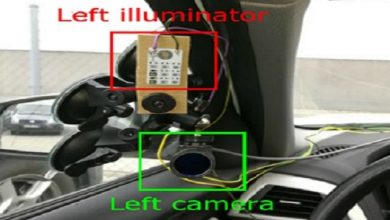Advanced Driver Assistance Systems (ADAS) Testing Equipment – An Innovation in Automation

New trends and innovations are entering the automotive industry almost every day. As the world moves towards technologically advance electric and autonomous vehicles, concerns regarding driver safety and driving efficiency are growing.
Engineers and scientists from all around the world are working to make driving comfortable and safe. Advanced driver assistance systems (ADAS) are the result of years of hard work. ADAS are designed to automate, adapt, and upgrade automotive technology to increase driving safety.
Here the question arises, how will you test these systems before using them in real life applications?
As manufacturers strive to meet the safety norms, a holistic view of the software and hardware validation workflow is required for quickly recognizing test scenarios necessary for ADAS testing. Modern ADAS testing hardware and software are designed to test these ADAS systems for an almost endless number of scenarios.
In this article, we will look at some of most important tests, simulation and trends that are expected to define the worldwide ADAS testing equipment market’s future.
What’s the purpose of ADAS testing equipment?
Driver error is the leading cause of accident around the world. According to the National Highway Road Safety Administration (NHTSA), driver error is responsible for 94% of traffic accidents, with recognition errors being the most common cause. By using advanced driver-assistance systems (ADAS) we can reduce accidents, injuries, and fatalities and eliminate human error.
For ADAS to perform efficiently, sensors, cameras, software, lighting, and audio components of the system must be tested thoroughly, so that they recognize obstructions and defects quickly and take necessary actions.
ADAS testing system must be flexible enough to test passive or active systems, alerting mechanisms, and safety features without hindering driver in parking and driving duties.
Why is simulated ADAS testing becoming popular?
Test drives are a convenient and fool proof method for evaluating car’s performance. We can do it on roads, in cities, or on designated test tracks. Real life ADAS testing is beneficial since they enable for the evaluation of a vehicle’s performance in real-world circumstances.
Autonomous vehicle testing is a different ball game. Many unexpected circumstances that an autonomous car may experience cannot be covered in real-world testing. As a result, examining an autonomous vehicle’s ADAS systems on-road isn’t a viable choice.
Virtual simulation testing solves this issue. By creating a virtual environment for ADAS system, we can simulate a whole driving situation and test ADAS system using software. It allows self-driving automobiles to be tested in a variety of settings. Manufacturers are switching towards ADAS testing software as they provide hazard free, accurate and less cost testing options.
For instance, Alphabet subsidiary, Waymo utilizes computer simulation to test its self-driving robot taxis. Company creates virtual city models and uses them to test its ADAS system. Every day, Waymo collects data on virtual journeys. Using that data, the firm incorporates information into its 600 minivans, which are then field tested to ensure that they are safe to drive on public roads.
Nvidia has also embraced virtual simulation for ADAS testing of autonomous cars and boost vehicle security.
As simulation technology improves to meet the essential driving challenges, ADAS testing will become more prevalent in the virtual world. This effort will be crucial in furthering the evolution of ADAS, autonomous technology, testing and validation in the actual world.
Market Analysis of ADAS testing equipment’s
The surge in technical advancements and innovation in the field of ADAS systems is expected to boost the market for its testing equipment in coming years. As per Future Market Insights report of Advanced Driver Assistance System (ADAS) Testing Equipment Market, sales are expected to grow at a 12.1% compound annual growth rate (CAGR) until 2031.
Rapid automation and advent of self-driving vehicles are the key factors influencing the ADAS testing equipment market. As ADAS contain electronic components which require regular calibration and testing, the demand for testing equipment’s will remain steady in upcoming years.
Companies are collaborating to pool their resources for intensive research and development purposes. This strategy will produce new integrated testing solutions and assist engineers in reducing the testing cost. Collaboration will seamlessly integrate test data and tools across the software verification with validation workflow system.
For instance, AVL, a leading company for providing test systems and the Netherlands Organization for Applied Scientific Research (TNO) are working together to speed up the validation of self-driving car technologies. AVL is creating a scenario-based open verification and validation tool chain that allows for fast test design and execution in a variety of testing scenarios. TNO has created a proprietary system for extracting scenarios and statistics from real-world driving data.
The AVL Test Case Generator will generate test cases and plans based on TNO StreetWise database circumstances. The simulation generator and open testing environments provided by AVL make it feasible to combine virtual and actual testing in a test plan that is optimal. Both aspects help us get closer to the smart testing of ADAS functionality that we all want.
Future of ADAS testing equipment in United States
Future Market Insights report that, Advanced Driver Assistance System (ADAS) Testing Equipment Market, in North America is expected to grow at a staggering rate of 11.3% CAGR through 2031.
Automotive giants like Tesla, GM Motors, and Nissan has shown preference towards ADAS testing equipment’s for testing their self-driving passenger vehicles and robo-taxis. United States being the epicenter of technical breakthroughs in the automobile sector will offer ideal conditions for ADAS testing equipment market to flourish in upcoming years.
The National Highway Traffic Safety Administration (NHTSA) is devising updated guidelines and imposing several road safety and vehicle assistance rules and regulations. With imposition of such state and national regulations, the demand for testing setups will increase over the decade.
Manufacturers and partnering with regional testing facilities for ADAS development and evaluation till the new NHTSA rules are finalized.
What does the future beholds?
The area of application for software-based ADAS test equipment will be vast in the coming years. As autonomy becomes a hot topic, automakers will be leveraging test software, sensor fusion, and driver state awareness systems to ensure the safety of drivers, pedestrians, property, and vehicles. In addition, testing the ADAS system will become mandatory in upcoming years.
Automakers will be relying on state-of-the-art sensors to test the performance of driver assistance systems. As accuracy and reproducibility becomes the cornerstone of the global ADAS test equipment market, manufacturers are working on the development of automated calibration and configuration systems to reduce overall test time during the verification and debugging process.
The lack of in-house testing infrastructure and regulatory challenges for self-driving cars will enable manufacturers and OEMs to collaborate with testing centers to accelerate the development of ADAS system.
In the future, more and more ADAS testing will be performed in virtual environments as ADAS test equipment technology is being modified for simulating demanding driving scenarios. Such bold innovations will usher in a new era of modern automobiles.
Author:

Nikhil Kaitwade
Associate Vice President (AVP) – Market Research
Future Market Insights
Nikhil Kaitwade is Associate Vice President (AVP) – Market Research at Future Market Insights, ESOMAR-certified market research and consulting firm Future Market Insights (FMI). The award-winning firm is headquartered in Dubai, with offices in the US, UK, and India.
Published in Telematics Wire


